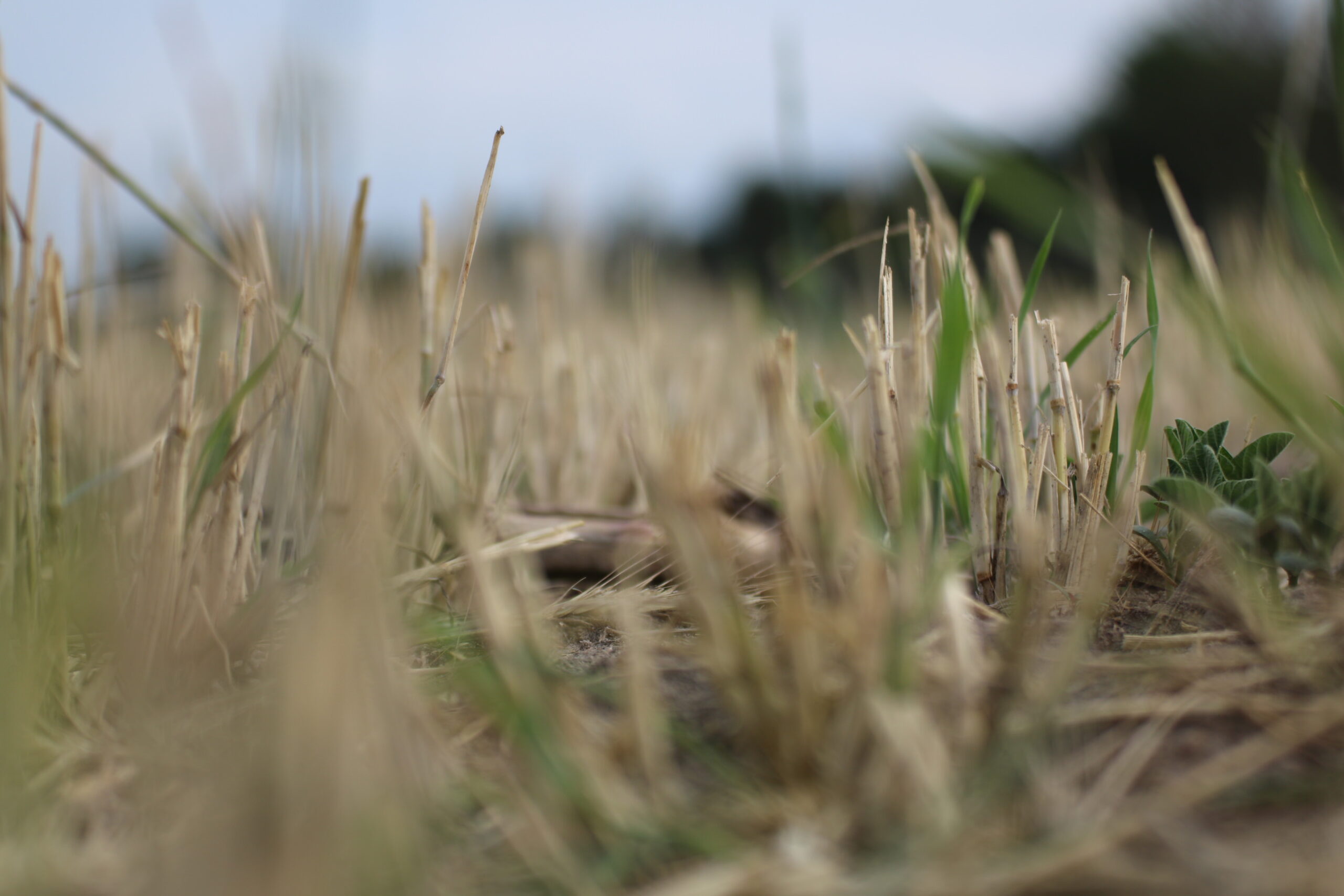
After the announcement of the Climate-Smart Commodity projects last year, we’ve entered an exciting new phase of this work: implementation. Following a successful first enrollment season, the AgSpire technical assistance team is now working with farmers and ranchers enrolled in our programs to select and implement new practices like cover cropping, reduced and no-tillage, perennial seedings, holistic grazing, and nutrient management – among others. Our team works with each enrolled producer to help identify the best options and practices for his or her operation and goals. This month, we’ve seen the first cover crops planted, grazing plans implemented, and soil samples pulled.
During the winter season, cover crops are a primary focus. Cover crops are plants grown to produce living “cover” on fallow ground between subsequent cash crops. This living cover provides so many benefits: erosion is reduced, soil health indicators are increased, water availability and infiltration are enhanced, weeds are suppressed, pest and disease cycles are broken, and biodiversity is increased.
Despite these manifold benefits, matching the right cover with the right field at the correct time can seem complicated and overwhelming when first starting to use cover crops in a rotation. Timing, winter moisture, soil type, equipment needs, and need for forage can all factor into if, when, and how to use cover crops. We strive to help farmers overcome these challenges, focusing on the core goals they are attempting to achieve through the practice, while experimenting, learning, and adapting to what works the best for their farm.

A Deep Dive into Cover Crop Benefits
Typical fallow periods in the upper Midwest and Great Plains – where our grant programs are currently focused – tend to range from October to late May. Close to six months of the year with nothing growing! During fallow months, soil erosion and movement is so evident and common place that there is a colloquial term for it: “Snirt,” the combination of snow and dirt. In most cases topsoil from nearby fields is blown into ditches where it mixes with snow, leaving a pile of soil in the ditch in the spring once the snow melts. The topsoil that is left in the ditch is the highest fertility, most productive soils. Some estimates indicate that the loss of major nutrients in one inch of topsoil costs farmers roughly $688.40 per acre (NDSU Extensions, Crop and Pest Report).
Cover crops play a major role in combating this erosion, helping ensure that the healthiest soils are held in place and available for spring planting. The vibrant, green, living vegetation growing in a winter field means the soil is covered and protected from the impacts of wind and water, holding the topsoil in place.
While this above-ground benefit is easy to see, much of the benefit that a cover crop offers is found beneath the ground, not immediately visible to us:
> Water Retention: Living vegetation and expansive root systems increase water infiltration and absorption by creating pores and channels within the soil profile, granting water the opportunity to soak in, like a sponge, and reduce runoff over the soil surface, directly into drainage ditches and waterways. When water is absorbed, it is conserved, and utilized by plants and other terrestrial organisms.
> Biodiversity: Typical ecosystems of the upper Midwest evolved with around 10-30 species of grasses, broadleaves, and woody species of vegetation covering the landscape. Countless species of insects, and various forms of wildlife co-evolved to develop natural ecosystems that were highly diverse and intricate. By grazing the high nutrient, protein packed forage provided during usually lean winter months enables producers to mimic mother nature and harness the positive effects of a healthy soil and ecosystem.
> Carbon Capture: Plants use sunlight and carbon dioxide to make carbon-based molecules through photosynthesis. Much of the exudates produced by plants are utilized by microorganisms within the soil. Over time, a buildup of carbon-based, humic materials increases and are gradually built into soil organic matter. These natural systems make agricultural soils a vast “sink” for carbon sequestration and contribute positively to Greenhouse Gas (GHG) emissions and climate change mitigation.
About the Author
DEREK VER HELST
Senior Conservation Agronomist
Derek has over 15 years of experience working with landowners and corporations to design, manage, and validate research trials, maximizing short- and long-term crop outputs. With a continued passion for conservation and the natural ecosystem, he is focused on the natural symbiosis organisms have with one another in the environment. Always eager to learn, he is continuously expanding his knowledge of soil health, chemistry, and pest disease management.
Derek holds a bachelor’s degree in Biology from South Dakota State University and a master’s degree in Agronomy from Iowa State University. He is also a Certified Crop Advisor and Technical Service Provider through NRCS.
 Visit the SustainAg Network
Visit the SustainAg Network